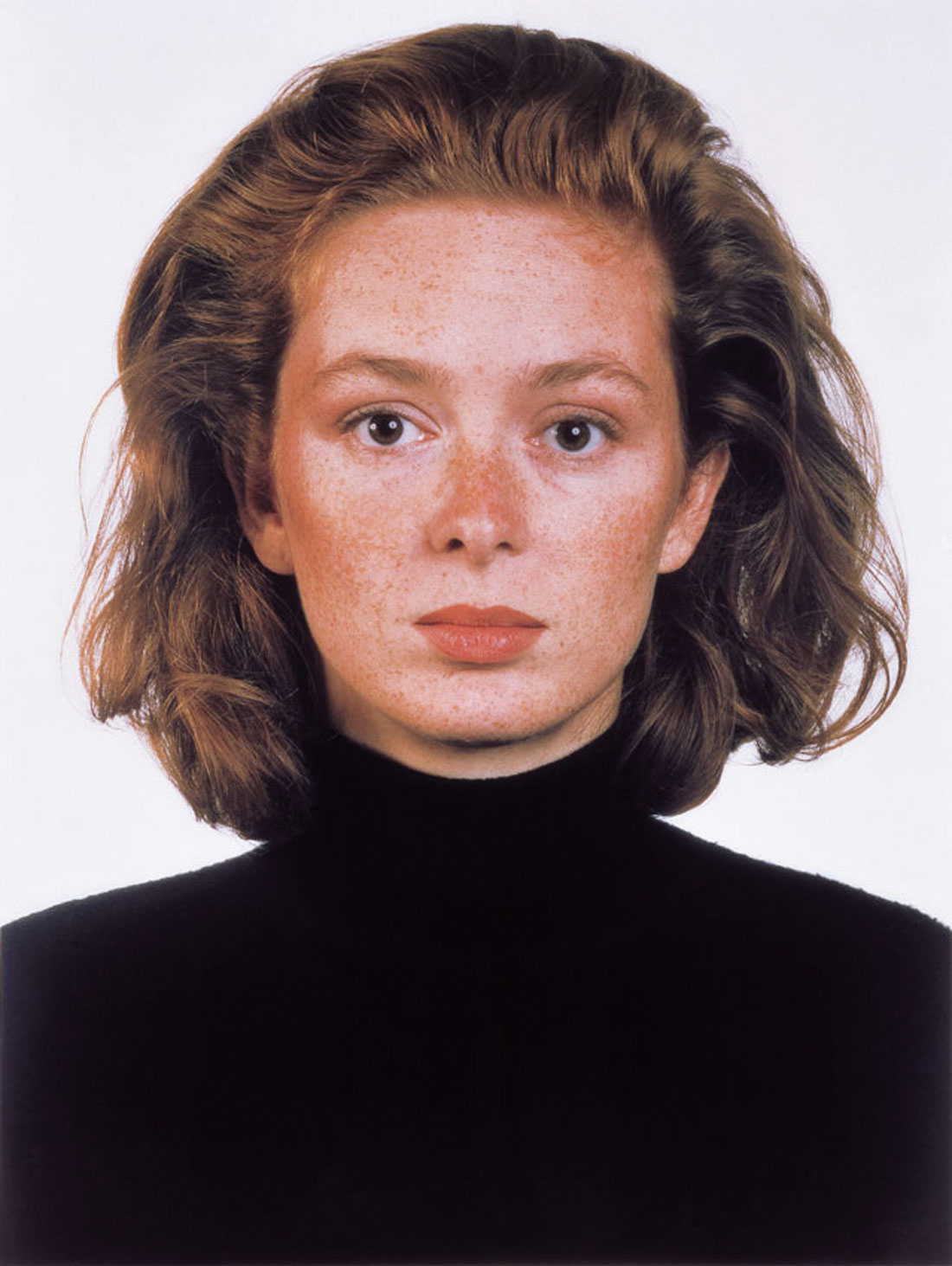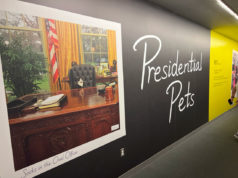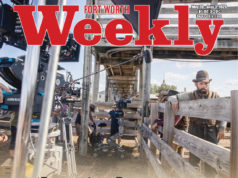“Portrait (P. Lappat)” is imposing in both scale and content, with a gaze that’s inescapable. Though it’s the first thing you see when you walk into Framing Desire: Photography and Video, up now at the Modern Art Museum of Fort Worth through late August, Thomas Ruff’s sprawling close-up of an attractive young brunette’s open face is sneakily eclipsed by distant music, calling out to you, luring you deeper into the exhibit.
As you travel toward the source of the sounds, you pass “The Crying Game,” Mexican conceptual artist Artemio’s 10-minute video of movie clips of actors crying. At first it seems the music goes with the tears. But it doesn’t. The melancholic anthem comes from yet another video. In Ragnar Kjartansson’s “A Lot of Sorrow,” Ohio indie-rockers The National are shown playing their song “Sorrow” continuously for a little more than six hours. A hollow detachment from the weeping faces forms. Maybe this is because the clips are without context, reflecting on sadness in a detached way and revealing the emotion as one of many responses to the complexity of desire. “Sorrow” unwittingly becomes a sort of theme song for the entire exhibition.
Consisting of 115 photographs and videos from the Modern’s permanent collection, Framing Desire, curated by the Modern’s Andrea Karnes, works as a stand-alone show and a reflection of how an institution like the Modern can shape our tastes –– or shift our focus –– by concentrating on contemporary photographers and their important works.
Among the highlights are several photographs that make the mundane seem glorious. One is Hubbard/Birchler’s seven-part Holes series. Each chromogenic print is composed in such a way as to create a hole in the center of the image. In one example, a man wearing green trousers and a khaki shirt is framed by the bottom of a kitchen sink and the cleaning supplies in the cabinet below. In another, a figure in a red dress is seen through the opening of a closet door and is framed by the door and the items in the closet. In both images, the identity of the subjects is obscured, which heightens the mystery suggested by the odd composition.
They have the same eerie voyeurism of Arne Svenson’s “Neighbors #44” and “Neighbors #52.” Svenson’s secret portraits of his neighbors through their windows are a sort of Rear Window experience, equally creepy but minus the murder. They anticipate the Instagram age and in that context are a little less harrowing.
Perhaps related to the interconnectedness of the images is a decision that easily could have been unintentional, but to most regular visitors to the museum, it is unmistakable. I am referring to the decision to place British artist Melanie Smith’s video “Spiral City” on the same wall as former Fort Worthian Brian Fridge’s “Vault Sequence No. 10.” Smith’s piece is a slow-moving aerial video of Mexico City. It was a highlight of the Modern’s México Inside Out for me, and it was even better the second time around, knowing that it is now part of the museum’s permanent collection. Although the wall text makes a strong connection between this and Robert Smithson’s “Spiral Jetty,” an earthwork sculpture built in 1970 at the Great Salt Lake, it’s easy to make a similar connection to Fridge’s video, both having a steady, hypnotic hum –– Smith’s helicopter blades and Fridge’s ice crystals swirl in harmony. The point is that the Modern’s new acquisitions fit right in.
While the strategy succeeds here, I can see how it could be improved elsewhere. For what must have been paid for Laurie Simmons’ “Walking House” (a photo of a toy house on mannequin legs from the 1980s), we could’ve gotten three more Alison V. Smiths! This is not to say that building a powerhouse collection around superstars like Simmons –– and Richard Misrach, Robert Mapplethorpe, Gordon Matta-Clark, and others –– doesn’t help museumgoers access the best of contemporary art, but it’s important to provide context to those works by bookending them or, perhaps rather, by ornamenting them with works by regional artists, especially ones like Texan Alison V. Smith, whose vivid color photographs have the same sensibilities of an Ed Ruscha painting or his early photographs of the California desert. More Alison V. Smiths also could make for a well-placed compliment to Misrach, an obvious influence.
Along with works that were acquired as recently as last year, including Love Hotels, Framing Desire also reintroduces some pieces that have been off the walls far too long.
Nic Nicosia’s dreamy nocturnal images come to mind. “Untitled #7,” depicting two figures, one an adult male and the other a little girl, both partially lit and creating harsh shadows, evokes both dread and curiosity. Another piece, “Untitled #9,” reveals a figure on a bed with an ominous, Barbie-like shadow cast on the wall beside her. These images hang in the gallery that leads to the second-story sculpture garden and could easily be missed, but they are completely worth seeking out.
Beyond the mysterious and erotic, the exhibit also has a sense of humor. Cory Archangel’s “Coffee Table Book about Coffee Tables” is a super-cut edit of Seinfeld episodes related to a storyline about Kramer’s coffee table book. This cheeky focus bordering on the absurd would be almost dismissible if not for its biting commentary on the absurdity of the media glut that we’ve been conditioned to acknowledge endlessly if not outright obey. In a bizarre way, we have become the show about nothing and make less sense than the things we watch. l
Fort Worth’s Christopher Blay is an installation artist and curator at Tarrant County College, Southeast. His body of work includes “The Ark on Noah Street,” “Machine Time,” and “Satellites.” He recently returned from a one-year residency at Centraltrak and is currently working on public art projects in Fort Worth and Dallas.
[box_info]Framing Desire
Thru Aug 23 at the Modern Art Museum of Fort Worth, 3200 Darnell St, FW. Free-$10.
817-738-9215.[/box_info]











